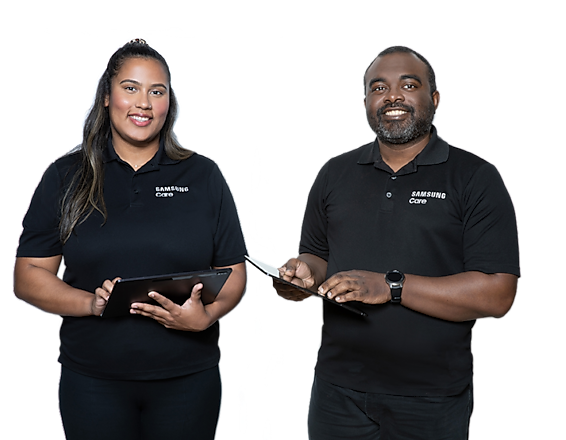FCC information
The device may cause TV or radio interference if used in close proximity to receiving equipment. The FCC can require you to stop using the mobile device if such interference cannot be eliminated.
Any device that uses Bluetooth® or Wi-Fi®, or any device with a power supply is subject to FCC Part 15. FCC Part 15 covers both intentional radiators (Bluetooth and Wi-Fi) and unintentional radiators (such as emissions from power supplies and circuit boards).
This device complies with part 15 of the FCC Rules. Pursuant to part 15.21 of the FCC Rules, you are cautioned that changes or modifications not expressly approved by Samsung could damage your product. Operation is subject to the following two conditions: (1) This device may not cause harmful interference, and (2) this device must accept any interference received, including interference that may cause undesired operation.
This equipment has been tested and found to comply with the limits for a Class B digital device, pursuant to part 15 of the FCC Rules. These limits are designed to provide reasonable protection against harmful interference in a residential installation. This equipment generates, uses, and can radiate RF energy and, if not installed and used in accordance with the instructions, may cause harmful interference to radio communications. However, there is no guarantee that interference will not occur in a particular installation.
If this equipment does cause harmful interference to radio or television reception, which can be determined by turning the equipment off and on, the user is encouraged to try to correct the interference by one or more of the following measures:
- Reorient or relocate the receiving antenna.
- Increase the separation between the equipment and the receiver.
- Connect the equipment to an electric outlet on a circuit different from that to which the receiver is connected.
- Consult the dealer or an experienced radio/TV technician for help.
FCC RADIATION EXPOSURE:
This equipment complies with FCC radiation exposure limits set forth for an uncontrolled environment. This equipment should be installed and operated with at least 8 inches (20 cm) between the equipment and your body. This device and its antenna(s) must not be co-located or operated in conjunction with any other antenna or transmitter.
IC Notice:
The term “IC” before the radio certification number only signifies that Industry Canada's technical specifications were met. Operation is subject to the following two conditions:
- This device may not cause interference, and
- This device must accept any interference, including interference that may cause undesired operation of the device.
- For products sold in the US and Canadian markets, only channels 1–11 are available. You cannot select any other channels.
IC RADIATION EXPOSURE STATEMENT:
This equipment complies with IC RSS-102 radiation exposure limits set forth for an uncontrolled environment. This equipment should be installed and operated so there are at least 8 inches (20 cm) between the equipment and your body. This device and its antenna(s) must not be co-located or operated in conjunction with any other antenna or transmitter.






